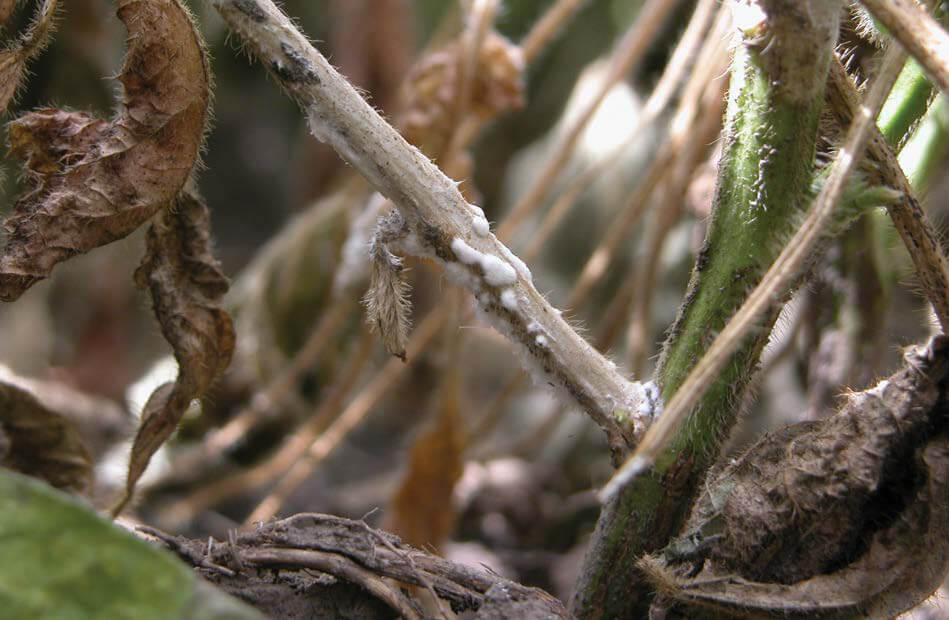As summer rapidly wraps up, some farmers may start to see a serious disease in their fields – white mold. Those two words often bring very disheartened feelings to northern Illinois farmers and rightfully so. White mold has the potential to significantly rob yield and not only that, but it has a very long persistence in our soils.
So, what does white mold look like? One rapid indicator that you have it is its notorious scattered patches of dead plants waving among other surrounding healthy plants. Sometimes, these fields may have lodged due to heavy winds and rain. As you open up the canopy, you’ll find stems that have a white moldy growth, and the stems will have a bleached appearance. Another indicator is hard, black sclerotia that look like rodent droppings on the outside and inside of the stem. These sclerotia will ultimately spread the disease into the soil, your combine, and other fields you subsequently harvest (if not cleaned out thoroughly) for years to come.
Why has it developed in your field? White mold is a high fertility disease, so we often see it in high yielding fields as well as fields that have received manure applications in the past. Any practice that decreases air flow through the canopy is also conducive for white mold: i.e., high plant populations, narrow rows, low lying areas of the field, and early planting dates can increase the odds of this disease.
If you have white mold in your field, now what? I recommend timing harvest of white mold fields to where you can thoroughly clean out your combine immediately after harvesting that field. Regardless of whether it is at the beginning or end of your soybean harvest, only you can decide that. Additionally, soften your yield expectations on that field. White mold’s impact on yield truly depends on how early the disease came into the field so there is no blanketed yield hit for our area. The earlier it came in, the harder it would be on yield. Unfortunately, we don’t see these signals in the field until infection has run its course and there are no further treatments available as it infects the plant at flowering.
What can you do to avoid white mold in the future? I encourage considering extending the number of corn crops in your crop rotation. Specifically, I see good experiences in the 2-3 years corn and one year soybean rotation. Regardless of what you choose, soybeans on soybeans will not be a good course of action for managing this disease. In terms of tillage, we need to try to minimize mixing the top two inches of soil as that is where the sclerotia thrive in the soil profile. There are a couple of options in terms of managing white mold: select a soybean variety with a strong white mold score, utilize fungicide, and consider incorporating rye. Variety selection will help mitigate some risk but will not prevent white mold from coming in at all. Fungicides are effective tools to layer with a strong variety because they’re applied around the time of infection. Some farmers have had good experiences incorporating a cereal ryegrass cover crop to manage white mold. Some universities have found that crimping and rolling that cover crop reduces the white mold incidence and severity through the anti-fungal effects the rye roots have within the soil profile. Cover crops must be managed properly, so consider that before adding them into your crop rotation.
Managing white mold is a long game process and can’t be solved in one season. By layering management tools, you can mitigate the impact of white mold in your own soybean fields.




 and then
and then
Research in Wisconsin has shown that cover crops and small grains in the rotation can reduce White Mold issues. The small grain or cover crop mimics the microclimate needed for sclerotia to release spores (high humidity, windstill conditions) at the wrong time of the year (late spring, afternoon) to infect soybeans (which usually occurs in canopied soybeans, mid-day post-flowering), so there are less sclerotia releasing spores at the critical time of the year